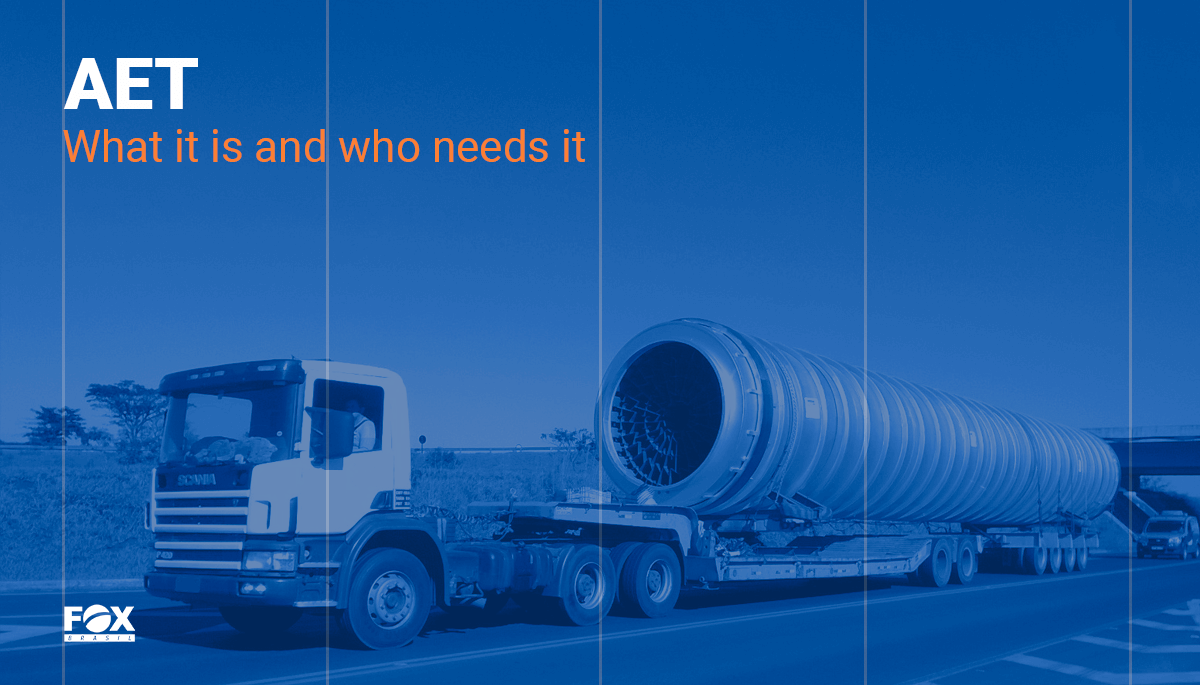AET

Understand Logistics & Freight
Contrary to the sea and the sky, roads often have limitations regarding their space and structure, which can come as an obstacle when transporting certain types of cargo, such as oversized and overweighted ones. In Brazil and many other parts of the world, not all roads dispose of a proper infrastructure to support the traffic of big and heavy vehicles, and to help control the situation and prevent damage to the roads, we have a special transit authorization called AET. Let’s understand it better below!
What exactly is AET?
The Autorização Especial de Trânsito, which translates into Special Transit Authorization, is a requirement for certain types of cargo vehicles to circulate on some Brazilian roads. There are different types of AET that offer distinct levels of authorization, which can be requested by the interested party, in accordance with their demands.
It is important to note that this authorization is mandatory, and transiting in vehicles that fit the established criteria without it can lead to severe consequences, such as expensive fines and even the apprehension of the vehicle until the matter is resolved.
Who needs AET?
AET applies to vehicles carrying indivisible, oversized, and overweight cargo, as well as car carriers, road trains, self-propelled cranes mounted on trucks (whether they are carrying the cargo or not), and tanker trucks carrying liquid that causes their weight to be heavier than the maximum established by the CONTRAN (National Traffic Council) regulations.
It is important to note, however, that every AET is specific to the cargo to be carried. That means that, for example, if you already have an AET to transport a pipe, you cannot use that same AET to transport a piece of machinery. You will need to make a new request.
Types of AET
To make things simpler, we can break down the types of AET into two categories: Time and Route.
Time-related authorizations are based on the frequency of your operations. They can last a year, a month, or for a single journey, being possible to renew them if necessary.
Route-related authorizations are based on the roads that will be passed through during the operation. In Brazil, we have state roads and federal roads, each type demanding a specific license, due to infrastructural and safety reasons. In case your intended route includes both these types of roads, you can get the two licenses at the same time.
Key Components of the AET Document:
Vehicle Information:
The AET document includes detailed information about the freight vehicle, such as its dimensions, weight, and registration details. This ensures that the transportation complies with Brazilian road regulations.
Route Details:
Freight forwarders must specify the exact route the cargo will take during transit. The AET document outlines the approved route, ensuring that the vehicle adheres to the authorized path.
Cargo Description:
AET includes a thorough description of the cargo being transported, including its nature, dimensions, and weight. This information helps authorities assess the potential impact of the cargo on the roads and plan accordingly.
How to make a request?
You can start your process directly on the DNIT (National Department of Transport Infrastructure) session of the Brazilian government’s website. From there, you can file a request by submitting a few documents regarding the cargo and the vehicle as well as declaring the roads that will be passed through during the transportation. The latter may seem like a complicated step, especially if you are not familiar with Brazilian territory, but a local freight forwarder can certainly offer the support you need.